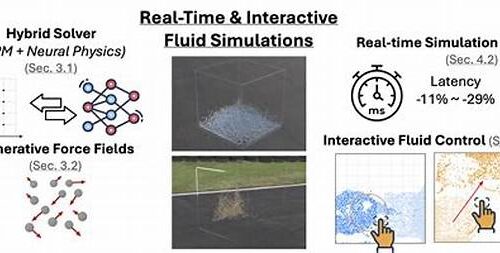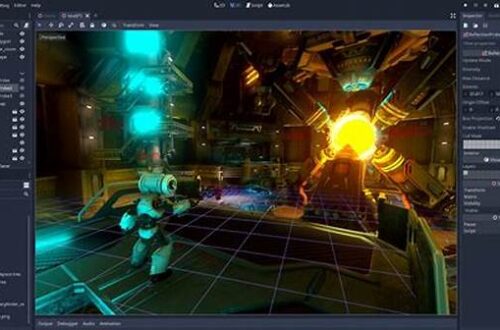Hey gaming enthusiasts and Unreal Engine aficionados! If you’re like me, you’ve probably spent countless hours crafting your virtual worlds, fine-tuning those graphics, and adding the coolest features to your game. However, we’ve all faced those pesky performance issues that make our virtual masterpieces a bit less stellar. Today, we’re diving into some amazing tips and tricks for optimizing Unreal Engine performance so your creations can run as smoothly as butter on a hot skillet.
Read Now : Game Development Tools For Beginners
Understanding the Basics of Unreal’s Performance
Let’s kick things off by getting to grips with the basics of optimizing Unreal Engine performance. Trust me, understanding these fundamentals is like having a secret superpower! The Unreal Engine is, no doubt, a powerhouse, but it can get cumbersome when overloaded with heavy assets or unnecessary details. To optimize, start by analyzing your game’s performance using Unreal’s built-in tools. Consider adjusting the level of detail for models and ensuring textures are not higher than necessary. Another essential tactic is to wisely manage the number of dynamic lights — they can be a real zap on performance.
Next up is optimizing memory usage. Keep texture sizes in check and use streaming wisely to improve memory efficiency. Remember, every tiny optimization counts! And hey, don’t forget about the magic of Level Streaming, which can drastically increase your game’s performance by loading only necessary content. It’s all about balancing great visuals with smooth gameplay.
Of course, the journey doesn’t stop there. Optimizing Unreal Engine performance also involves the effective use of Blueprints and C++. Efficient scripting can significantly reduce load times and improve responsiveness. Use profiling tools to track down bottlenecks in your scripts and eliminate unnecessary calculations or function calls. Keep scripts clean – your future self will thank you for it!
Tips for Increasing Frame Rate
When it comes to optimizing Unreal Engine performance, boosting that frame rate is crucial. Keep these tips in mind:
1. Cull Wisely: Use culling to ensure only visible objects are rendered.
2. LOD Magic: Properly implemented Level of Detail (LOD) reduces the load.
3. Light Optimization: Favor static or stationary lights over dynamic ones.
4. Efficient Scripting: Optimize your scripts for smoother execution.
5. Texture Sizes: Use appropriately sized textures to save memory.
Effective Use of Unreal Engine Tools
Let’s explore the wonderful toolbox Unreal provides for optimizing Unreal Engine performance. First up, we have the mighty Profiling Tools. These bad boys can be your best friends in tracking down performance issues. They offer insights into what’s slowing your game down and help you focus on the critical areas.
Don’t sleep on the beauty of LOD systems either. They’re your solution to maintaining visual integrity without overburdening the engine. Then there’s the use of C++ alongside Blueprints — while Blueprints are more user-friendly, sprinkled bits of C++ can drastically help in optimizing, especially for performance-heavy tasks.
Best Practices for Asset Management
Managing assets is a huge part of optimizing Unreal Engine performance. Here are ten quick points to keep those assets in check:
1. Organize Assets: Keep your files tidy.
2. Texture Compression: Use it wherever possible.
3. Remove Unused Assets: Clean your project regularly.
Read Now : Exploring Construct 3 Panel Tools
4. Stream Assets: Use Level Streaming for smoother game flow.
5. Efficient Naming: Consistent naming adds clarity.
6. Use Instances: Instead of unique meshes.
7. Use MIP Maps: Helps with texture handling.
8. Correctly Size Models: Match scale to game dimensions.
9. Optimize Shaders: Complex ones can be costly.
10. LOD Techniques: Reduce the load with Levels of Detail.
Leveraging Blueprints and C++
Now, let’s chat about Blueprints and C++. When optimizing Unreal Engine performance, these two are like Batman and Robin. Blueprints provide an intuitive, easy-to-use way to build game logic without the need for coding. They’re awesome for rapid prototyping and iteration. However, don’t leave C++ out of the equation.
For hardcore performance tasks, C++ is crucial. It offers the power and precision needed for optimizing. Consider using it for backend processes and components that demand high efficiency. The beauty lies in their combination — leverage Blueprints for what they excel at, and let C++ handle the rest. It’s like having the best of both worlds.
The Role of Testing and Iteration
Let’s now talk about the unsung heroes of optimizing Unreal Engine performance: Testing and Iteration. Consistent testing throughout the development process is vital. It uncovers areas needing optimization and ensures smoother gameplay. Use Unreal’s built-in testing tools to your advantage.
Iteration allows you to refine details and enhance performance step by step. Each test iteration brings you closer to a polished end product. It’s all about identifying bottlenecks, making informed adjustments, and witnessing tangible improvements. Keep the loop tight — test, refine, test again. That’s the secret to top-notch performance.
Conclusion
To sum it up, optimizing Unreal Engine performance isn’t a one-time task; it’s an ongoing process. It requires a balance between visual fidelity and operational efficiency. By understanding core concepts, leveraging Unreal’s tools, efficiently managing assets, and harnessing the power of Blueprints and C++, you can elevate your game’s performance significantly.
Remember, it’s about making thoughtful decisions and consistently iterating. Stay patient, and you’ll see rewarding results. Keep experimenting and sharing your insights — that’s how we all grow as a community. Happy developing, and may your frame rates be ever in your favor!





